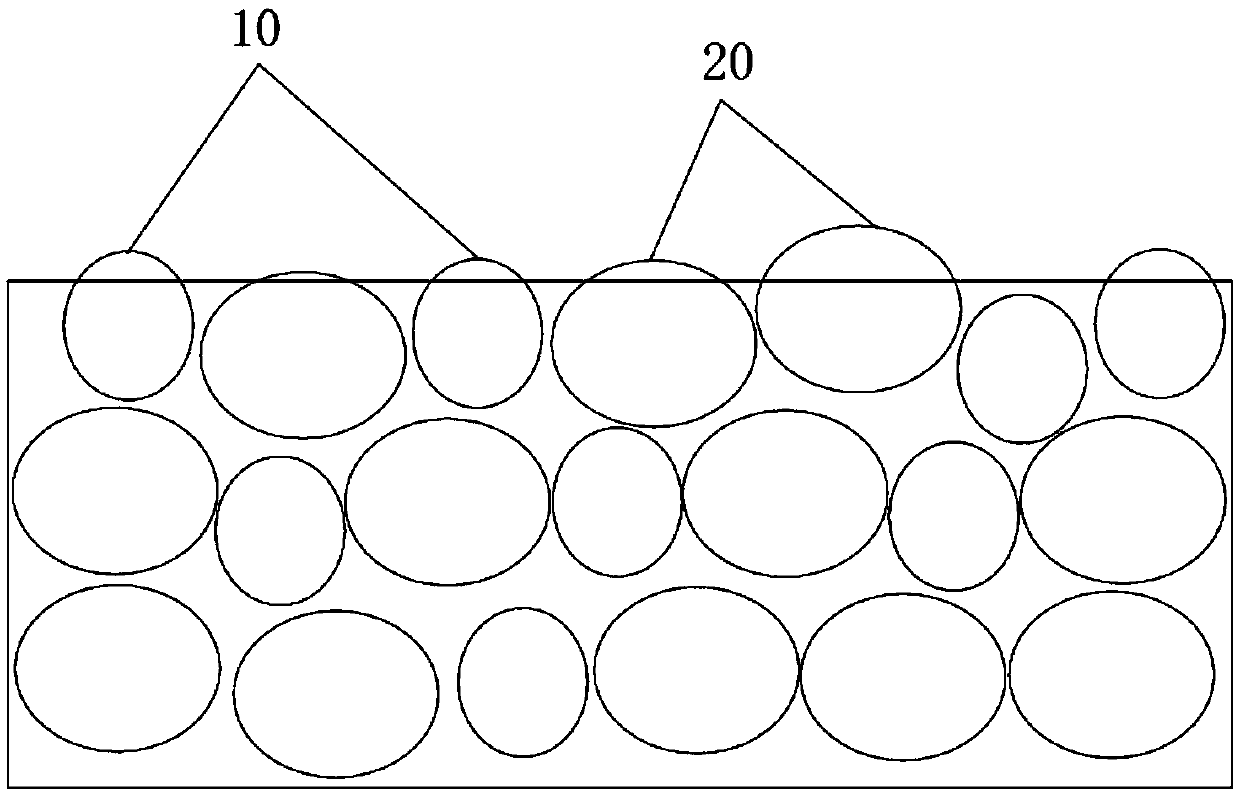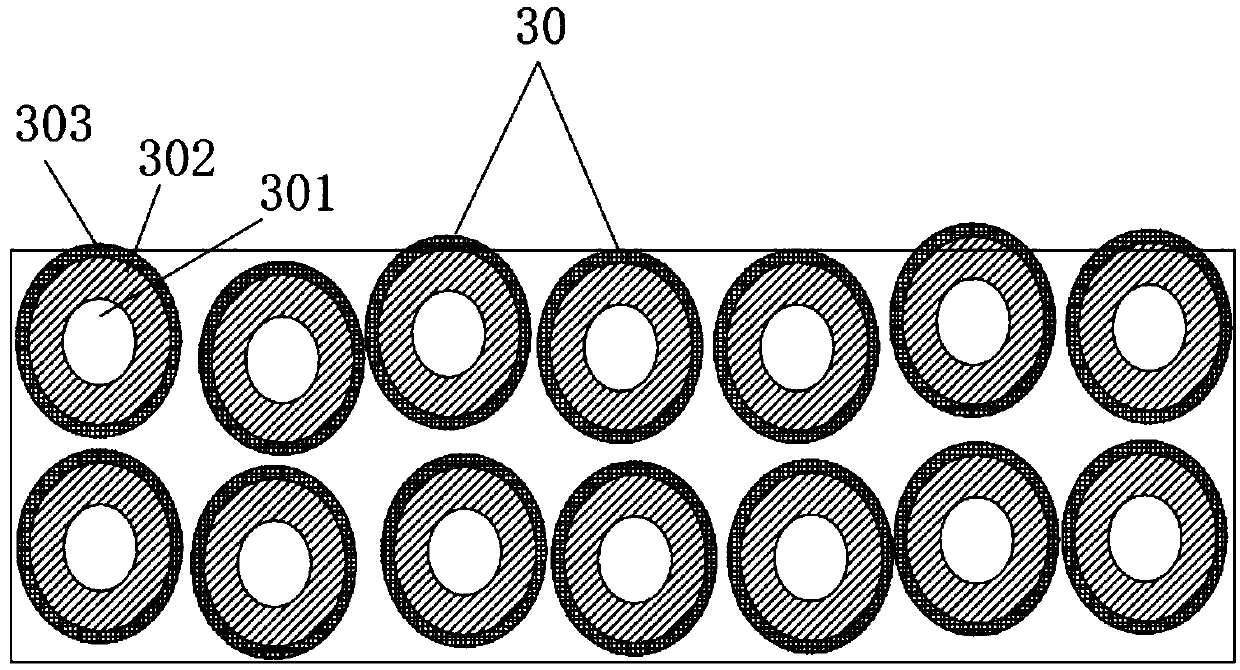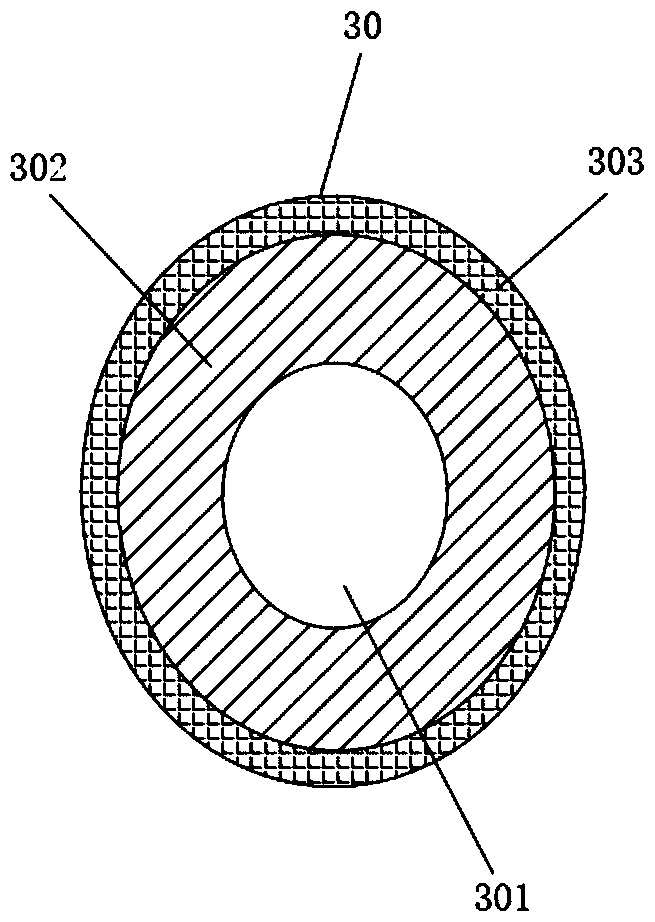Self-cleaning highly-anti-reflection coating solution, preparation method thereof and self-cleaning highly-anti-reflection solar glass
A self-cleaning, solution technology, used in glass tempering, glass manufacturing equipment, manufacturing tools, etc., can solve the problems of difficult cleaning, solar glass adhesion, etc., and achieve the effect of improving light transmittance, improving self-cleaning effect, and reducing dosage.
- Summary
- Abstract
- Description
- Claims
- Application Information
AI Technical Summary
Problems solved by technology
Method used
Image
Examples
Embodiment 1
[0038] 1. Preparation of self-cleaning high AR coating solution:
[0039] Step a, utilize soap-free emulsion polymerization method to prepare cationic polystyrene emulsion:
[0040] In terms of mass percentage, 2% comonomer acryloyloxyethyltrimethoxyammonium chloride and 82.5% water are placed in a reaction vessel, 15% styrene is added for stirring, and the temperature is raised to 50° C. under nitrogen protection, and then 0.5% potassium persulfate initiator aqueous solution is added dropwise, and cationic polystyrene emulsion is obtained after reaction.
[0041] Step b. Mix the cationic polystyrene emulsion and solvent ethanol evenly. The amount of solvent is to dilute the cationic polystyrene emulsion to a solid content of 1%, and then add the silicon source substance tetramethoxysilane under stirring at 15°C The reaction is carried out to obtain the nano-core-shell silica microsphere sol coated with polystyrene by silica. In this step, the mass ratio of the solid mass of...
Embodiment 2
[0048] The main technical scheme of this embodiment is the same as Embodiment 1, the difference is:
[0049] 1. Preparation of self-cleaning high AR coating solution:
[0050] Step a, utilize soap-free emulsion polymerization method to prepare cationic polystyrene emulsion:
[0051] In terms of mass percentage, the comonomers of 2% methacryloxyethyltrimethylammonium chloride and 2% acrylamidopropyltrimethylammonium chloride, 75% water are placed in the reaction vessel, and 20% styrene was stirred, and the temperature was raised to 65° C. under the protection of nitrogen, and then 1% aqueous solution of azobisisobutylamidine hydrochloride initiator was added dropwise to obtain a cationic polystyrene emulsion after reaction.
[0052] Step b. Mix the cationic polystyrene emulsion and the solvent evenly, and then add the silicon source material to react under the condition of stirring at 20° C. to obtain the polystyrene-coated nano core-shell silica microsphere sol. In this step...
Embodiment 3
[0058] The main technical scheme of this embodiment is the same as Embodiment 1, the difference is:
[0059] 1. Preparation of self-cleaning high AR coating solution:
[0060] Step a, utilize soap-free emulsion polymerization method to prepare cationic polystyrene emulsion:
[0061] In terms of mass percentage, the comonomers of 0.2% dimethylaminoethyl acrylate and 0.3% diethylaminoethyl methacrylate, 89.4% water are placed in the reaction vessel, and 10% styrene is added for stirring. Under the protection of nitrogen, the temperature was raised to 73°C, and then 0.1% ammonium persulfate and sodium persulfate were added dropwise in an initiator aqueous solution mixed in a volume ratio of 1:2, and a cationic polystyrene emulsion was obtained after reaction.
[0062]Step b. Mix the cationic polystyrene emulsion and the solvent evenly. The amount of the solvent is to dilute the cationic polystyrene emulsion to a solid content of 17%, and then add the silicon source material to r...
PUM
 Login to View More
Login to View More Abstract
Description
Claims
Application Information
 Login to View More
Login to View More - R&D
- Intellectual Property
- Life Sciences
- Materials
- Tech Scout
- Unparalleled Data Quality
- Higher Quality Content
- 60% Fewer Hallucinations
Browse by: Latest US Patents, China's latest patents, Technical Efficacy Thesaurus, Application Domain, Technology Topic, Popular Technical Reports.
© 2025 PatSnap. All rights reserved.Legal|Privacy policy|Modern Slavery Act Transparency Statement|Sitemap|About US| Contact US: help@patsnap.com



